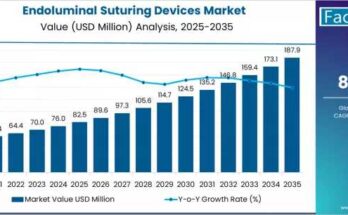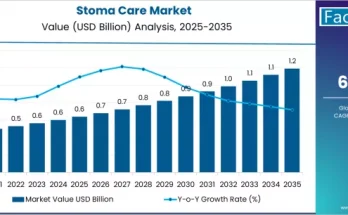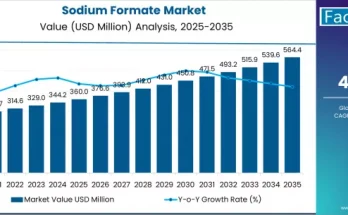A new industry analysis by Fact.MR, a market research and competitive intelligence provider, says that the global structural heart devices market is valued at US$ 12.17 billion in 2023 and is predicted to reach US$ 36.06 billion by the end of 2033.
Structural heart disease is a broad term describing a type of percutaneous therapy used to treat patients with congenital and inherited heart conditions that involve functional and structural abnormalities in the heart valves, proximal great arteries, and heart chambers. Due to wear and tear from infections, these diseases may manifest later in life but may also be present from birth.
Primary factors boosting the sales of structural heart devices are the rising prevalence of structural heart diseases, the surge in enlarged indication approval for numerous transcatheter structural heart products, and the rise in the senior population affected by various degenerative valvular heart diseases. Growing preference for minimally-invasive structural heart therapeutic products among patients who place a premium on value and the increase in research and development spending for the creation of cutting-edge, innovative products all contribute to the market growth for structural heart devices.
On the other hand, it is expected that constraints such as low accessibility and low affordability of cardiac procedures in emerging nations may somewhat impede the demand for structural heart devices in poor and developing economies.
The global market is dominated by North America due to the high rate of minimally-invasive procedures and rising endovascular procedure rates. Asia Pacific is anticipated to experience a high CAGR over the projected period due to advancements in screening programmes, rising heart disease awareness among the populace, and improved access to healthcare systems.
Impact of COVID-19 pandemic on structural heart devices market
The structural heart devices market outlook has been seriously affected by the global outbreak of COVID-19 as it led to a temporary delay in the surgical procedures that were not an emergency. This was majorly due to the high risk of infection in the healthcare settings that could possibly affect patients with heart-related disorders. However, with the increasing adoption of safety measures across hospitals coupled with the growing necessity for surgical procedures, the structural heart devices market is expected to grow steadily over the subsequent years.
Key Takeaways from Market Study
- Global demand for structural heart devices is expected to increase at a CAGR of 11% from 2023-2033.
- China’s market is predicted to expand at a CAGR of 10% during the projected period.
- Sales of heart valve devices are expected to rise at a CAGR of 11.5% during the forecast period.
- Demand for surgical heart valves is predicted to expand at a CAGR of 11% during the next 10 years.
“Highest demand for structural heart devices to be exhibited by hospitals as compared to other types of medical centers,” says a Fact.MR analyst.
Winning Strategy
The structural heart devices market is highly competitive and consists of significant market players, including Abbott Laboratories, Boston Scientific Corporation, Braile Biomedica, CryoLife, Inc., Edwards Lifesciences Corporation, and others.
- Medtronic introduced the transcatheter aortic valve replacement (TAVR) system Evolut PRO+ in the United States in September 2019.
- The MITRIS RESILIA valve was approved by the US Food and Drug Administration (FDA) in March 2022 for Edwards Lifesciences. It is a tissue valve replacement made especially for the mitral location of the heart.
More Valuable Insights on Offer
Fact.MR, in its new offering, presents an unbiased analysis of the global structural heart devices market, presenting historical demand data (2018-2022) and forecast statistics for the period of 2023-2033.
The study divulges essential insights on the market on the basis of product (heart valve devices, surgical heart valves, transcatheter heart valves, occluders & delivery systems), procedure (replacement procedures, repair procedures), age group (pediatrics, adults, geriatrics), indication (atrial septal defect (ASD), ventricular septal defect (VSD), patent foramen ovale (PFO), aortic valve stenosis), and end user (hospitals, ambulatory surgical centers, cardiac centers), across five major regions of the world (North America, Europe, Asia Pacific, Latin America, and MEA).


